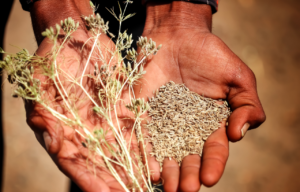A Path to Sustainability and Hope
In the face of climate change, deforestation, and environmental degradation, it’s easy to feel overwhelmed by the enormity of the challenges our planet faces. Yet, there is a simple yet powerful solution that lies right beneath our feet: trees. Tree planting, though often overlooked, is one of the most impactful actions we can take to combat climate change, restore ecosystems, and improve lives.
At Riday Foundation, we’ve witnessed firsthand how tree planting can spark change, not only for the environment but also for communities. With over 25,000 trees planted and counting, we understand that each sapling carries the potential to change the world. Here’s why tree planting matters—and how it can pave the way for a greener, more sustainable future.



1. Combatting Climate Change, One Tree at a Time
One of the greatest benefits of tree planting is its ability to mitigate climate change. Trees absorb carbon dioxide (CO2), one of the primary greenhouse gases contributing to global warming. A single mature tree can absorb up to 48 pounds of CO2 per year and produce enough oxygen to support two human beings.
By planting trees, we are creating natural carbon sinks that remove CO2 from the atmosphere, helping to slow down the rise in global temperatures. In this way, large-scale tree planting efforts can play a vital role in reducing the carbon footprint and mitigating the effects of climate change.
2. Restoring Degraded Ecosystems
Deforestation and habitat loss have devastated ecosystems around the world. Tree planting helps reverse this damage by restoring degraded landscapes and creating habitats for wildlife. Forests provide homes to countless species, ensuring biodiversity and balancing ecosystems.
In regions where deforestation has led to soil erosion and desertification, tree planting can rehabilitate the land, preventing soil degradation and water runoff. This creates more fertile land for farming and reintroduces vital nutrients back into the soil, enabling plant and animal life to flourish.
3. Improving Air and Water Quality
Trees act as natural filters for both air and water. They trap pollutants, dust, and toxins, improving air quality for communities living nearby. In urban areas, where pollution levels are high, trees can reduce the risk of respiratory diseases by filtering harmful particles from the air.
Similarly, trees play a crucial role in the water cycle. Their roots absorb rainwater, reducing the risk of flooding and improving groundwater quality. In regions prone to drought, trees help maintain soil moisture and provide a sustainable water source for agriculture and communities.

4. Enhancing Livelihoods and Economies
Tree planting is not only an environmental solution; it is also an economic one. In many rural areas, trees provide a source of income and livelihoods for local communities. Through sustainable agroforestry, trees can be integrated into farming systems, providing fruit, nuts, timber, and other resources for families to sell and consume.
By empowering communities with the knowledge and resources to plant and care for trees, we help create self-sustaining economies. For many smallholder farmers, trees are a lifeline, enabling them to improve their agricultural productivity while also benefiting the environment.
5. Promoting Health and Wellbeing
Beyond the physical benefits, trees also offer psychological and social advantages. Studies have shown that spending time in green spaces surrounded by trees reduces stress, improves mood, and promotes overall mental well-being. In urban settings, tree-lined streets and parks provide much-needed respite from the hustle and bustle, offering a calming environment for residents.
Tree planting projects also bring communities together, fostering a sense of unity and collective action. When individuals participate in tree planting efforts, they feel a deeper connection to the land and a greater sense of responsibility for its preservation.
6. Creating a Greener Legacy for Future Generations
The trees we plant today will continue to grow and thrive for generations to come. By planting trees, we are investing in a legacy of sustainability that will benefit future generations. Each tree represents hope—a promise that our children and grandchildren will inherit a world that is greener, healthier, and more resilient.
At Riday Foundation, our goal is to plant 100,000 trees by 2030. Every tree planted brings us one step closer to a greener planet. We encourage communities to take ownership of these projects, ensuring that the benefits of tree planting are felt long into the future.
Tree Planting with Riday Foundation: How You Can Help
Tree planting is a simple, scalable solution to some of the world’s most pressing environmental issues, but it requires collective action. At Riday Foundation, we invite you to join us in our mission to plant trees and nurture nature. Here’s how you can get involved:
- Participate in Tree Planting Drives: Join one of our community tree planting events, where we plant saplings in deforested areas, urban parks, and school grounds.
- Sponsor a Tree: For a small contribution, you can sponsor the planting and care of a tree, ensuring it grows into a healthy, mature asset for the environment.
- Support Environmental Education: Help us raise awareness about the importance of tree planting and environmental conservation by sponsoring educational workshops for schools and communities.
Together, we can create a future where forests flourish, wildlife thrives, and communities live in harmony with nature.












